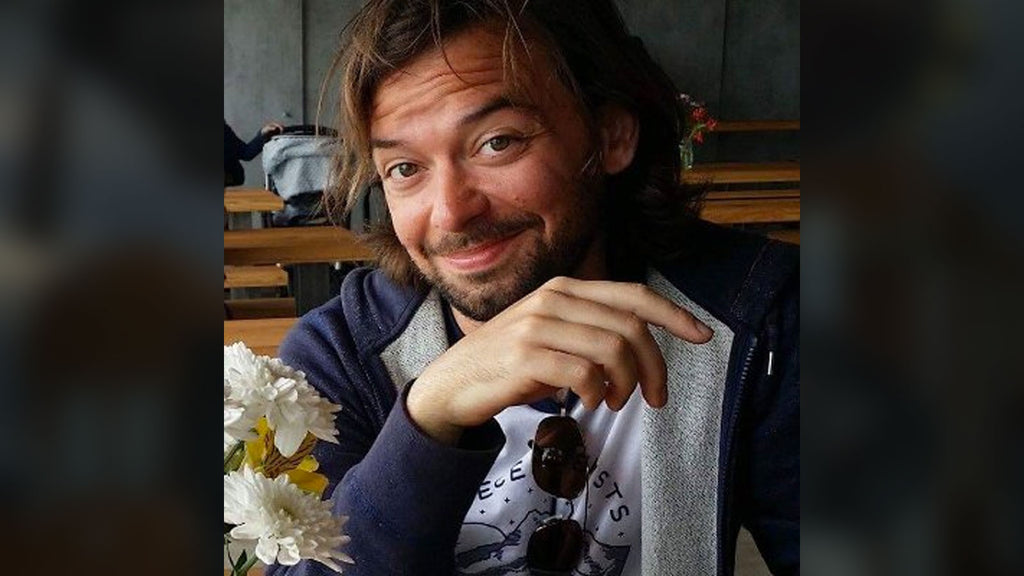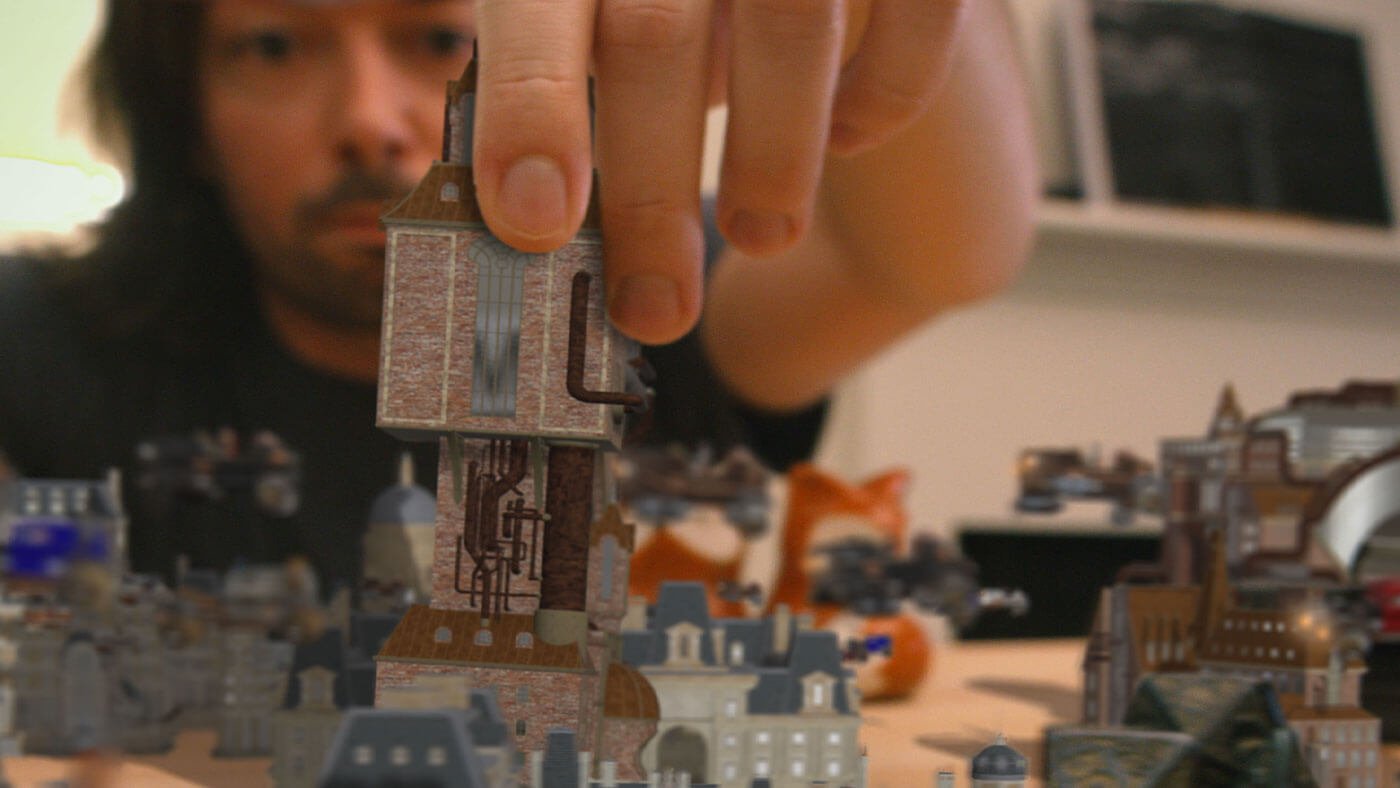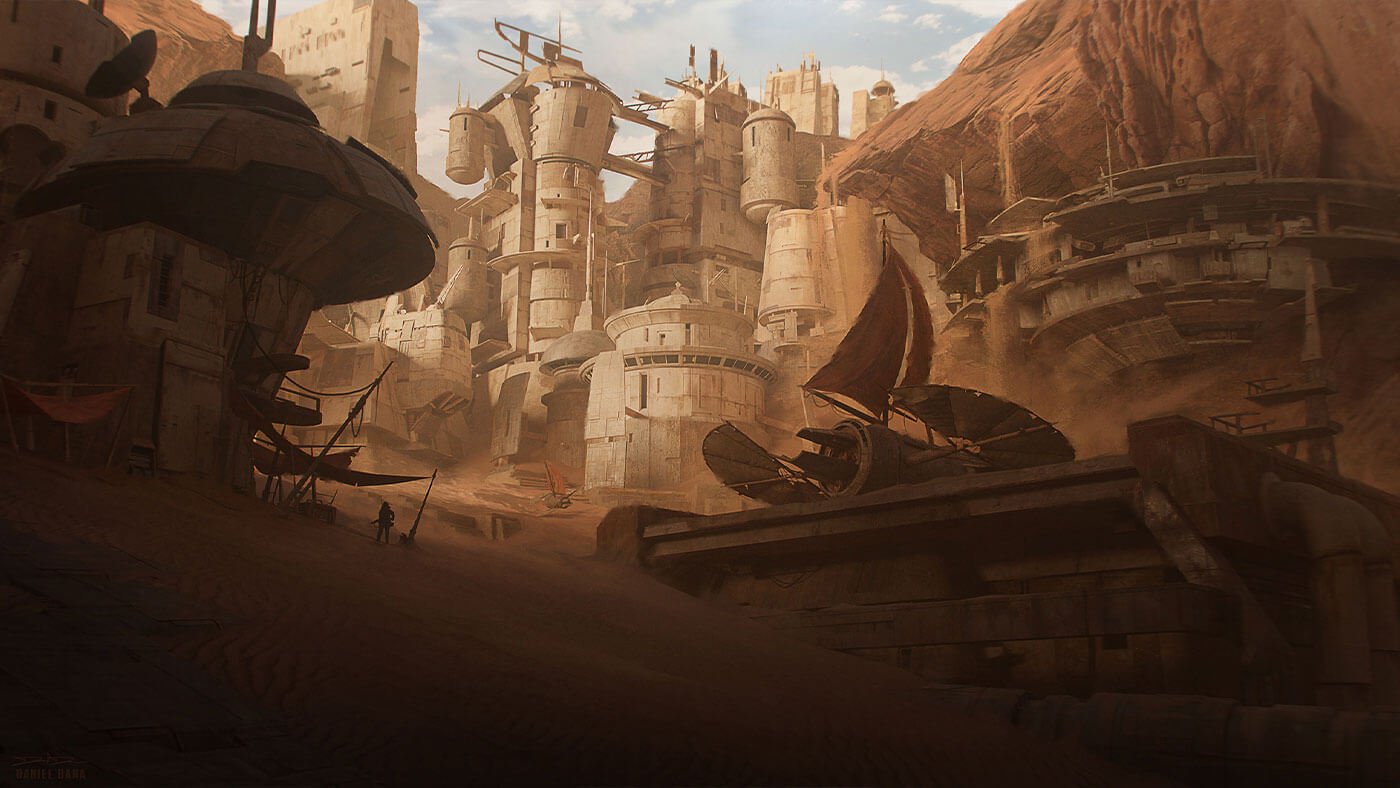Behind the Scenes with Filmmaker Matt Lincoln
Filmmaker Matt Lincoln, also known as Filmattic, made a splash last year with his viral “Lockdown Loops,” a collection of seamlessly looping VFX animations he posted to Instagram and TikTok, several of which feature our 3D asset kits. Recently, we had the pleasure of chatting with Matt to discuss how he made those videos; how he got his start in commercial work for companies like Nextdoor, Beats, Panasonic, and Estée Lauder; and what his goals are for the future.
KitBash3D: Hello Matt, great to have you! You have an impressive resume of writing, directing, editing, and VFX for a number of commercials and other fun projects. How did you get your start?
Matt Lincoln: I decided to go to film school at NYU in 8th grade, and once I got there, I spent much of my time once panicking about how I’d repay loans, so I invested some extracurricular time in learning VFX and getting good with editing software (those were the most expensive skills I’d need to hire to eventually direct the films I wanted to make, and therefore also the most likely to make me some cash in the meantime). Thanks to a chance encounter at a swing dance event, I lucked into my first freelance edit gigs right after college. And thanks to another chance encounter at a film festival, I landed some work producing and directing commercials and started a small company shortly thereafter. Happily, I’ve never needed a side hustle.
All this to say: the way I made a living after college had NOTHING to do with college. I learned the skills online, and did the networking off-campus. For those still asking themselves the big question (“should I go to film school?”): film school was fun, but it was not necessary and I’m not sure I’d do it again.
The rest was just a game of keeping the momentum up as much as the industry would allow, but without letting my lil’ company swell up so much that it owned my life. Commercials were all fine and good, but I never want to lose sight of the idea that they are a means to an end: I make commercials so I can stay adjacent [to films] and keep making my own art. Ultimately I want to be a TV showrunner and make insane, steampunky, sci-fi adventures with an eye toward social justice and representation in mainstream media.
KitBash3D: Congrats on the success you’ve found thus far, and keep up the hustle! College can be a great investment if played right, but many of our staff didn’t attend one, so it’s definitely not a deal-breaker in this industry. Is 3D one of those self-taught skills you picked up, and how has it played into your work?
Matt: Embarrassingly, I only have a little 3D knowledge, which is why KitBash3D and other premade 3D model sites are key for me. I know enough Blender to take stock models, modify them, change materials around, separate parts that I want to animate independently, and export them for use in Element 3D, but I haven’t modeled seriously for a decade. The “custom objects” in my videos, like spaceships and hoverboards, are mostly made of spare parts and greebles that I bash together in Element with preset textures. Plugins like Element are great for VFX artists and compositors like me because it is very easy to see something resembling your end result in the composite, with motion blur, almost in real time as you work. So after you get your world dimensions and track your scene, you can essentially sketch things out as you go and work with facsimiles until you’re ready to commit to an idea in earnest.
KitBash3D: That’s the process you used for your “Lockdown Loops,” right? What was the story behind those and where did the idea come from?
Matt: I think we all felt pretty cooped up since lockdowns began. And for me, creative impulses are cyclical. They come and go, and you learn to recognize them as precious. It’s always tough to be an artist when you have the itch to create but lack the resources. Filmmakers can especially relate here, because the practice of this craft is so collaborative and often expensive. Barriers to entry are everywhere, as are reasons to NOT do something. Situations like COVID force you to look around your apartment and say, “What can I do right now with what I have?” So these “Lockdown Loops” were just me entertaining fantasies of escape when no end to the lockdown was really in sight. And, also, to play with some workflows I’d been wanting to experiment with but never really had the time to burn or any professional impetus to do the R&D for.
Ups and downs are already built into the life of a freelancer, so preparing to weather the dry periods and seeing them as opportunities were already familiar disciplines to me. Looking at it objectively, I’m very, very, VERY lucky that lockdowns, for me, meant free time, space to think, and an opportunity to maybe make a few people grin or feel a little more seen or a little less alone.
KitBash3D: Can you go a little more into detail and walk us through a step-by-step process on how you made some of these loops?
Matt: As I mentioned above, Element 3D and KitBash3D are both key in my workflows. My stuff is rendered 100% in After Effects, and the cameras are tracked 100% in After Effects. I guess what I want to drive home here is that the barriers to entry for this process are lower than a lot of the messages I get seem to assume. So, step one: calm down, you have more of the tools than you think you do.
The trickiest part of a lot of these is the projection mapping. Integrating your practical environment into a 3D scene will usually require some version of this. Buena Depth Cue is a great tool for it and there are tutorials out there on how to do it with native AE tools, but I actually do something pretty janky with RG Corner Pin that gets the job done in a pretty stable way with nice, high-res textures as a result. All of these work well.
For the coffee table videos, my workflow is basically:
- Shoot a million versions, pick the least terrible one, and set the handles. Make sure you have some nice clean corners to track (I use coasters for this purpose, which don’t appear in the final shot because they are covered by the 3D cityscape).
- Track. If you shoot well, this is a one click task in After Effects.
- RESET YOUR GROUND PLANE. A lot of people neglect this step but I promise it is necessary and you will thank yourself for it when you’re on step one thousand. While you’re here, use the points generated on your ground plane to create and orient a solid and several nulls to use as grounding references for your buildings.
- SCALE YOUR SCENE. This is a strange one for AE artists with no 3D experience to understand, but 3D rendering isn’t as scalable as basic vector animations are. Make sure that your scene isn’t unreasonably large or unreasonably tiny. It sounds stupid, but this can affect how your shadows, textures, and aliasing behave… especially in Element. It is correctable (but annoying) further down the line, so don’t worry too much about this. But if your null objects aren’t moving pretty close to scale with how your cursor is moving, you probably need to adjust. And if your shadow maps look inexplicably terrible later on, don’t panic— you just need to adjust your scene scale. Do this by creating a 3D null, parenting anything NOT YET PARENTED to this master ‘scalar,’ adjust, then unparent.
- Aside from that, follow your AE and Element tutorials and have fun filling out the space.
Now, the hoverboard loop is the really fun one. Probably my favorite IG post and definitely the one that got the most attention. The best part of this is that it was shot entirely on a tripod. I’m literally just jumping onto the coffee table in my apartment and pretending to snowboard (lol, it is a very versatile table). I painted out the table, projection mapped the living room, transitioned my body to a 3D sprite on impact with the table, and parented that sprite to the same null that was controlling the board at the impact frame. With a little rebound animation, that result was already pretty smooth.

Matt: At that point, as long as I didn’t go too crazy with the parallax (the eye kind of forgives most things), I just went nuts with 3D objects and motion paths – which was fun because I’d just gotten a new-ish graphics card and wanted to push it to the limit in Element (which is an entirely GPU-based render engine). I mixed it up with the Heavy Metal and the Shangri-La kits to approximate a style I’d been wanting to try for a short film idea. Then I threw in some water generated in Psunami (now discontinued and hard to make work with your camera, but very pretty) and a few particle trails/lens flares. I looped it to the front of the animation with a sprite pulled from frame one, and there we had it! That was my first feature on VFX news and it blew up my Tiktok a little bit, which was fun to watch.
KitBash3D: It was fun for us to watch too. Thank you so much for entertaining us and sharing these insights. As you’ve also said, Andrew Kramer over at Video Copilot is an excellent source of tutorials for those out there who want to dive in deeper.
Before we go, what keeps you learning and creating art even when life throws you a curveball – like having to stay at home?
Matt: Wow, what a large question. I could wax on about wanting to change the world by using art to change people’s minds… which is definitely part of it. But honestly, first and foremost, I keep going because I love it more than anything else in the world. Whenever I get discouraged and don’t see a way forward, I say to myself, “Ok, so you’re quitting. Sure. But what the f*** else are you gonna do?” And when I don’t have a good answer to that, I get back to work. Somehow a way out of whatever got me so sour always manifests.
There are so many great people who have said this in so many ways, but I like Walt Disney’s version best: “Keep Moving Forward.” Simple, to the point, and applicable in most situations. And always remember: your heroes have this problem too. Make peace with the fact that it will never go away and is probably a symptom that you’re on the right track, and it becomes easier to handle.
About Matt Lincoln

Matthew Lincoln is a writer, director, and VFX artist based in Venice, CA. You can see portfolio reel and commercial work on his website, and follow his personal work on Instagram and TikTok. You can also contact him via Twitter or catch him at The Edit Party, a digital coworking space for artists that he frequents along with creators like Lea Sabban, Kevin Lustgarten, and Cache Bunny.




![Watch Ian Hubert Transport Real People Into CG Worlds [Demo]](https://dropinblog.net/cdn-cgi/image/fit=scale-down,width=2400/34244460/files/featured/42450801_5.jpg)